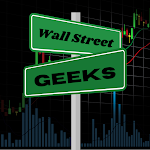American corporations are demonstrating a robust sense of optimism about their future, reflected in their vigorous spending patterns.
The earnings season for the first quarter has surpassed the expectations of numerous Wall Street analysts. Concurrently, corporations are intensifying their share buyback programs, providing an additional impetus to the rejuvenating stock market.
As of Monday, S&P 500 companies that have announced their first-quarter results have reported share buybacks totaling $181.2 billion, as per data gathered by Birinyi Associates. This represents a 16% increase from the same quarter last year. The rate of purchases has been unusually brisk for a continuous period of nine weeks, as noted by BofA Securities in a research note on Wednesday.
Leading the buyback trend are major tech companies: Meta Platforms, the parent company of Facebook, repurchased its shares worth $14.5 billion in the first quarter, marking an increase of approximately $5 billion from the previous year. Other companies that have amplified their buybacks include Apple, Netflix, and Nvidia, along with Wells Fargo, Caterpillar (a construction equipment manufacturer), and Altria Group (a tobacco producer).
This trend of spending is anticipated to persist. Apple’s shares experienced their most profitable day since 2022 on Friday, following the tech giant’s announcement of its plan to buy back $110 billion of its own stock. So far this year, 443 companies have declared a buyback plan, an increase from 378 in the previous year, according to Birinyi’s data.
Investors interpret the surge in buybacks as an indication of growing confidence among corporate executives, despite ongoing concerns about potential economic downturns or prolonged high interest rates.
Jeffrey Yale Rubin, president of Birinyi Associates, stated, “Corporate America believes their fundamentals are sound. They’re not apprehensive about rates or their balance sheets. If those who understand the companies best are comfortable buying their stock, why shouldn’t I be?”
The S&P 500 has seen a 9.3% increase this year, including a 3.5% rally in May alone, marking the best commencement to the month since 2009.
The surge in buybacks this year follows a significant decline in 2023 when S&P 500 companies’ repurchases plummeted by 14%. This was the second-largest annual drop since the global financial crisis in 2008, amid fears that high interest rates could trigger a recession. Some companies hastened to buy back stock in 2022, prior to the implementation of a new 1% buyback tax the following year.
Contrary to these fears, the economy has remained resilient, confounding skeptics. Earnings growth has resumed, and Wall Street analysts predict an acceleration in growth for the remainder of the year. Despite interest rates being at their highest in over two decades, the additional yield that investors require to lend to larger companies is near multi-decade lows.
Goldman Sachs analysts forecast that total S&P 500 repurchases will reach $925 billion this year and $1.075 trillion in 2025, representing annual growth rates of 13% and 16%, respectively.
Buybacks are favored by investors as they reduce the number of outstanding shares, thereby enhancing a company’s earnings per share. Meta’s stock soared by 23%, marking its best day in nearly a decade, following the announcement of a $50 billion buyback plan in February.
Share repurchases offer a relatively flexible use of cash. They can generally be executed at a company’s discretion, without a fixed deadline. Other cash uses, such as investing in a new factory or distributing a regular dividend, are much more difficult to halt if the economy takes a downturn. Investors typically owe taxes on the dividend payments they receive.
Increased share buybacks can indeed pose several risks if not managed carefully:
- Personal Gain and Enrichment: Buybacks can sometimes be used for personal gain and enrichment. For example, executives holding stock options may be inclined to initiate buybacks to temporarily elevate the company's stock price, thus inflating the value of their holdings.
- Poor Timing of Investment Decisions: Companies may not always execute buybacks at opportune times. Repurchasing shares when stock prices are high can lead to overpayment and a subsequent poor return on investment if prices drop.
- Excess Leverage: Buybacks can lead to increased leverage, diminishing a company's resilience. Financing buybacks through debt raises a company's leverage, making it more susceptible to financial distress, particularly in economic slumps.
- Neglecting Other Business Areas: Buybacks could divert funds from essential areas like research and development or new product and facility investments. This could gradually undermine a business's competitive edge and overall strength.
- Misuse of Resources: Companies face the risk of misallocating funds for buybacks, especially when more lucrative investment opportunities exist.
- Liquidity Risk: Utilizing cash reserves for buybacks can reduce a company's liquidity, potentially leaving it unprepared to handle declines in sales and profits during economic downturns.
It’s important for companies to consider these potential risks and manage their buyback programs carefully to ensure they’re acting in the best long-term interests of the company and its shareholders.
While large repurchases can enhance the appeal of stocks, some investors caution that they should not be the sole reason for purchasing. Buybacks can indicate a slowing business, as rapidly expanding companies often reinvest their cash into growing their operations.
“Buybacks should be one component of a comprehensive strategy to enhance shareholder return,” advised Tim Thomas, director of research and wealth manager at Badgley Phelps. He added that large repurchases won’t boost stocks in companies that aren’t increasing revenue or finding other productive ways to invest their cash.
Major tech companies are among the largest purchasers of their own stock, but they are also making significant investments in other areas. Both Meta and Alphabet, Google’s parent company, initiated a dividend for the first time this year, meaning five of the so-called Magnificent Seven now pay one. This is in addition to the billions of dollars that many big tech companies plan to spend every quarter to develop artificial intelligence capabilities.
Sarah Kanwal, managing director of equities at Crestwood Advisors, finds these spending decisions reassuring. “They’re not retreating on their investments,” she said.
